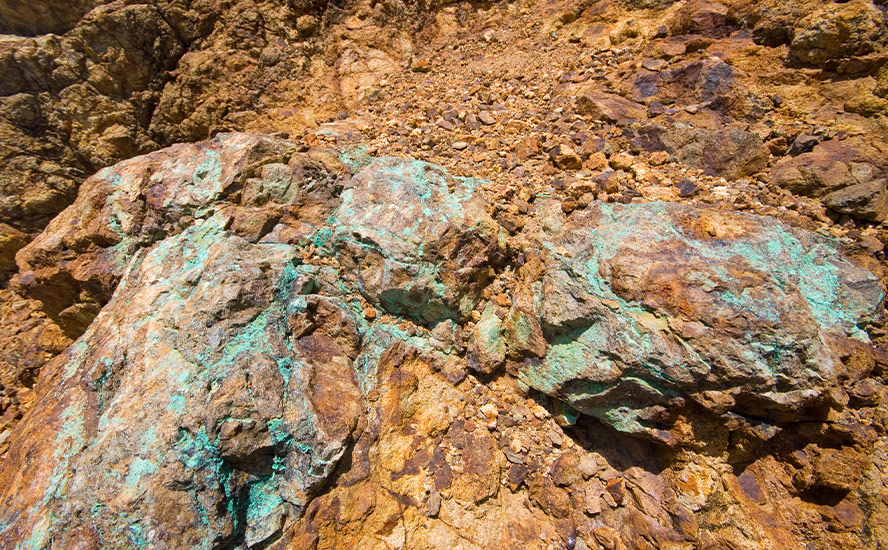Cypress releases technical report; maiden resource imminent

2018.11.03
Cypress Development Corp (TSXV:CYP) has moved another peg on the board as it continues to advance its Clayton Valley Lithium Project in Nevada. The company on Feb. 21 published a technical report on the project and while it does not yet contain a resource estimate, that is expected soon, likely just after the PDAC conference in Toronto March 4-7. All eyes are on that maiden resource because it is expected to be BIG. Eye-poppingly huge. Cypress has discovered a different type of deposit than the usual brine or hard rock lithium deposits, which must either be mined using drill and blast methods, or pumped into shallow ponds and allowed to evaporate, after which the concentrated lithium carbonate is extracted.
The company is working to establish a resource and economic metallurgical process for what Cypress believes is a large, bulk-tonnage deposit of leachable, non-hectorite claystone. If, as indicated by early results, the claystone is proven to be a significant lithium source rock, then Cypress will have the best of both hard rock lithium and brine – a combination of mining an at-surface leachable deposit, the claystone, that’s capable of producing a ‘synthetic lithium brine’.
Cypress has tested surface samples of Dean claystone and determined that a synthetic brine can be created that is similar to those produced by Albemarle – its nearby Silver Peak operation is the only producing lithium mine in the US – and Pure Energy brines immediately to the west of the Glory property. In fact a synthetic brine from Dean shows double the lithium value compared to an actual production well from Pure Energy and four times the Albemarle production brine. Recent metallurgical results revealed that the rate of lithium extraction increased to 74% by adding a small amount of sulfuric acid to water to leach the lithium-bearing claystones.
Speaking to head geologist Bob Marvin, Ahead of the Herd learned the deposit starts at the top of an outcrop and descends to around 350 feet below surface. The high-grade portion, with grades between 500 and 1,000 parts per million (ppm) lithium, is now estimated to be nearly 70 meters thick. Recent drilling showed dark green to black, ash-rich “mudstone” starts at 50m depth. The grade increases at a so-called redox boundary, where material above the boundary is oxidized and below is reduced (oxide and reduced represent two parts of a chemical reaction). The two best holes from the latest Dean property assays showed 107 meters at 1,134 ppm Li and 76 meters of 733 ppm Li. The first of three new holes was completed to a depth of 27m, where oxidized and reduced claystones were encountered throughout. Two more holes are expected to be completed in early March and their results will be included in the resource estimate.
The tonnage numbers of this monster lithium deposit are very impressive, but remember these are your authors numbers, they are NOT 43-101 compliant and are not to be relied on for investment purposes:
3,500 meters length X 2,000 meters width X 70 meters thick X 1.75 specific gravity (density) = 857,500,000Mt of lithium enriched claystone (approx. 4.5Mt of lithium carbonate equivalent – LCE).
Since we have no assays from Glory, these numbers are from what CYP has, so far, drilled on their 100% owned Dean claims only.
A comparison of other lithium deposits is illuminating, to say the least.
Albermarle’s Silver Peak Mine is the only operating lithium mine in the US with the capacity to produce 6,000 tonnes of LCE per year. The possibility of Albermarle partnering with, or outright taking over, a junior like CYP has always been intriguing to your author. After all, Silver Peak has been in operation for many decades and its lithium brine grades are rumored to have declined by a significant amount. Add in what might be the beginnings of a global US started trade war and additional lithium in the US might start to look even more attractive.
Neighboring Pure Energy Minerals has a total inferred resource (not reserves) of 218,000 tonnes – which is about 20 times smaller than Cypress’ Dean deposit. Lithium X Energy has lithium properties in both the Clayton Valley and Argentina. Its flagship Sal de los Angeles project, which also covers Salar de Diabillos, has an NI 43-101 resource of 1.037Mt indicated and 1.007Mt inferred (again, resources not reserves). This is about half the size of my estimated lithium carbonate equivalent contained in the Dean deposit.
A more fitting comparison is to some of the largest lithium deposits in the world. The Cauchari-Olaroz lithium project in Argentina – a joint venture between SQM, the largest lithium producer in Chile, and Lithium Americas – shows an updated 2017 mineral reserve summary of 1.499Mt of LCE, to be extracted from the brine operation at a production capacity of 50,000 tonnes per annum, targeted for 2020. The biggest lithium mine in Australia, jointly owned by Albermarle and Talison Lithium (owned by Chinese company Tianqui Lithium) has proven and probable reserves of 2.39Mt of LCE.
Of course, we have to be careful in comparing lithium resources versus reserves, since resources do not have any demonstrated economic viability. But if we take a leap of faith and assume that CYP’s estimated 4.5Mt are economically viable to extract, at an average 2017 price of $13,900 a tonne for battery-grade lithium carbonate… I’ll let you do the math. The deposit is world-class. And with lithium prices predicted to rise 16% a year for the next half-decade, its value can only increase. A 43-101 compliant resource report is coming very soon, followed shortly thereafter by metallurgy (lithium recovery) news. I own just one lithium company, Cypress.
Conclusion
Are our junior resource companies whose place in the resource food chain is to explore for and find, metals, oil and minerals that enable your modern lifestyle on your radar screen? I can guarantee you they are on mine.
If they are not on yours, maybe they should be?
Richard (Rick) Mills
Ahead of the Herd is now on Twitter.
Legal Notice / Disclaimer
This document is not and should not be construed as an offer to sell or the solicitation of an offer to purchase or subscribe for any investment.
Richard Mills owns shares in Cypress Development Corp (TSX.V:CYP).
Legal Notice / Disclaimer
Ahead of the Herd newsletter, aheadoftheherd.com, hereafter known as AOTH.Please read the entire Disclaimer carefully before you use this website or read the newsletter. If you do not agree to all the AOTH/Richard Mills Disclaimer, do not access/read this website/newsletter/article, or any of its pages. By reading/using this AOTH/Richard Mills website/newsletter/article, and whether you actually read this Disclaimer, you are deemed to have accepted it.

























